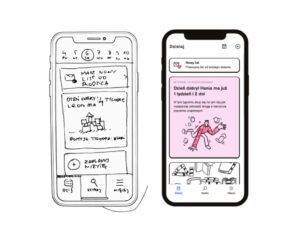Education and training are continually undergoing a tech revolution. What these revolutions will be based on, we tried to explain with Olli Vallo – the CEO of Education Alliance Finland. Below you will find an interview conducted by Jacob Dunn.
What are some of the most innovative technologies in edutech right now?
I would say that the true innovations in how education technology is now widely being used in schools as well are for sparking the creative thinking of students. There is a completely different scale now how creative projects are done. The pedagogical quality of these creative projects that are being done in schools at the moment is super good. I think that really has a huge impact on improving the students school experience when they are programming robots, building robots, composing songs, making movies, making different kinds of creative projects in schools when using technology. I think that is the true Innovation that already has a lot of impact.
Where does EAF fit as a rating application for education into this?
We are measuring and assessing the pedagogical impact of edutech solutions. So we help schools find the kind of solutions that suit their needs best. We conduct pedagogical evaluations and issue certificates for high-quality products and how schools are benefiting from our work is that mainly they go to our catalogue of certified products and they find good quality products from there. So it will be easier for them to find good products. We get to see a lot of different kinds of products and products that are very trendy coming from companies that have raised a lot of VC money to build a VR environment. We have seen some pretty cool applications already, but I think that we get to see that the sort of the trendiest things at the moment. We also try to remind ourselves that this is not the everyday reality in schools – what we see in our position – and when we look at what schools are actually doing, what kind of tools they are using it’s often different. They come behind a bit when it comes to trends in the education sector.
What kinds of things would you recommend school systems adopt? What kind of things do you think would be especially beneficial?
I think that technology has a lot of potential. Of course, the earlier mentioned creative projects that technology has a lot to contribute to those kinds of projects. Another very interesting area is student assessment through the use of technology. First of all, the teacher’s work of assessing students work becomes much easier if the technology is used in a smart way and teachers use good applications to do the assessment. It also changes the way of assessing students quite a lot. Back in the day, it used to be so that students took tests and exams and after the exam, the teacher gave them a grade which is a summative assessment. Now through the use of technology, the assessment of students Improvement can be continuous.
For example, building a portfolio is a much better way of assessing students progression than passing exams. And it doesn’t happen in the same way that first you study for an exam, then you do the exam, and after that, you will know what you know, and especially what you don’t know. Nowadays we can assess students progression on the go. Collecting peer feedback is one big trend at the moment in schools. So that students are also giving a lot of feedback to each other and also getting a lot of feedback from other students. From a pedagogical point of view, this is crucial and very beneficial.
Also bringing parents, like involving parents more to support student school work and so on. That’s one thing that can be done quite easily nowadays with technology – keeping them aware of what has happened in school and what the current projects their children are doing. And also involving them.
How did enter this sector? Why did you decide on edutech?

I’m a teacher myself and I graduated as a class teacher – I taught music. I also studied music and then I ended up teaching music in elementary school. I’m completely self-taught so I didn’t take any formal music lessons and I always enjoyed music a lot. This has always been a pure joy for me. Then I started teaching music in school and I noticed that this is just like nonsense what I’m doing there. So I was playing piano, the kids were singing very traditional stuff. I found it really hard to do anything like more fun activities in the classroom with 25 students and you had like two or three students who knew how to play piano a bit. Then I started bringing in iPads in the classroom, started composing songs, writing lyrics and this I was unable to do earlier without using technology. And I realized that this transforms the learning experience completely and then I got hired to work in this one Finnish company developing a music learning platform. I was touring a lot – I visited more than a hundred different Finnish schools, hosting music lessons using music composing software. Through this kind of experience, I realized that technology has a lot to contribute to improving learning experiences, but it’s very underused. Then we started Education Alliance Finland with a mission to find more good quality tools to be used in classrooms.
Reference video with Olli Vallo, CEO of Education Alliance Finland
I know that Finland has a world-famous education system and it’s consistently top of the world rankings. Do you think that Finland has – the market itself – is particularly open to these kinds of solutions? Or is there something else? Is there just a strong culture of innovation for edutech there?
I think that one special thing that we have in Finland that affects the adoption of technology in schools is that teachers have a lot of autonomy. I think that in most other countries it’s quite centralized. Decisions are made when it comes, for example, to what the education materials teachers are using in schools. So basically, in Finland, almost every city in Finland, every teacher can just decide autonomously what applications they want to use, what books they want to use, what materials they’re going to be using. It’s a good thing in a way that it doesn’t happen that someone else in the Department of Education makes the decision that will get is the application that every student and every school is going to use from now on and if it’s this kind of centralized decision or centralized purchase, it can happen that the application might suit a few teachers really well. But then again, it might give a really bad impression of using technology to some teachers that don’t find the application useful and they would be much happier with another application. So in Finland, what happens is that teachers are testing and piloting different solutions with an aim to find the most suitable for their needs. In general, they’re making the decisions autonomously what learning materials and what solutions they are using in their classrooms.
So almost every big city in Finland is currently running this kind of co-development projects where teachers are piloting edtech solutions in classroom and giving feedback for the developers how to improve the products. This is a good practice, which allows teachers to test new products and edtech developers to gather feedback from teachers and students. I think companies are using this feedback to improve their products. And this is this part of our work as well done by teachers who are using the applications in that we evaluate their using those in the classroom and then they use our evaluation framework to get the feedback to the developers. I see that Finland can work as a really good test bed for development. But it’s definitely the easiest to sophisticated decisions that what applications they want to use and what they don’t want to use. We are using technology quite a lot in schools nowadays, but we weren’t really the first countries to do really actively adopt in classrooms. We do it kind of slowly and always put pedagogy first.
Are there any trends that you see that you worry about? As in there may be some threats to education that are brought on by technology.
Well, I would say that at the moment when we are trying to implement more technology into everyday practices in classrooms, and it happens on the go. So it is quite a big burden for teachers to continue their work as it is, but at the same time try to learn new ways of doing their work and implementing a lot of new tools and so on. So I think that also in Finland when they have asked the teachers about the pros and cons of the digitalization of education they always name that they feel that it has brought a lot of extra work for them to learn these applications and try to benefit from those. Of course, they understand and I think that there is a mutual understanding in Finland that in the long run the use of technology is supposed to ease the work of teachers, make the work more efficient, be more pedagogically valuable and better justified. But I suppose that in every time when there’s a big change in one industry people who happened to go through the change they operate under a large chunk of extra work.
A couple of years ago, it used to be so that one company managed to sell bad-quality applications to schools with a good marketing speech and then teachers were disappointed. But nowadays, I think that the situation is much much better. Schools are making decisions related to when and how to use educational technology. They make those decisions based on pedagogical reasoning. They only use technology when they see that okay. This really improves the learning outcomes and improves the learning experience. Otherwise, they don’t.
Why did you decide to hire an external IT partner? Why do you decide to hire Espeo particularly?
It was clear to us that we need to automate and make the evaluation process faster through the use of the software. When we started designing the software, we realized quite quickly that it’s a lot of work to build this kind of software. Then you have to make the decision that whether you start recruiting [your] own software developers or whether you outsource the work. I think that in our case it was quite a logical decision to outsource the work. Even though nowadays, I would say we are a software company, but we don’t really sell the software itself or license to use the software. It’s internal software that we use for making our service better and to make it work faster. So in that case I think it was a good decision not to hire an in-house team.
What are some key factors in cooperating with external partners?
Well, communication is one thing I think. That’s the most important thing so it’s easy to keep in touch and communicate any new ideas, that we may come up with on the go. Also communication from your side to our direction works very well. Even though it’s like two different companies that are collaborating in this project. I think that the team that the developers and the producer from our side feel like they are one team and one unit that works together to develop the software. So it’s important that they get along well. I think that’s at least one thing.
What is some advice that you have for startups that are emerging in the edutech space?
I think that there’s a bit of a boom at the moment in the edutech space and a lot of companies with virtual reality and artificial intelligence solutions and so on are coming and presenting their ideas to the schools and starting to develop learning solutions. I think that the most important thing is before the new company puts any money or resources into product development is to first make sure that they are really solving a problem with their solution. The problem cannot really be that they want to make learning boring and they want to make it more fun because that’s like everybody is thinking the same. Instead, they need to be – the problem that they want to solve needs to be really clearly defined and addressed and they need to meet to prove that the problem exists and they can do all that before writing a single line of code.
Most of the educational innovations and ideas can be tested with a pen and paper or doing very fast prototyping and just like concept testing. I think that’s the main thing. Education is very local even though like compared to the gaming industry or financial industry or even the healthcare industry. With those if you come up with an innovation like it’s a good game, for example, it sells well in Finland it probably sells well in England or in the US Or China – just translated. But with education, if you come up with a really nice educational solution that becomes very famous in Finland. It has to be that the come-to-market happens in a very long hallway. It’s also possible that if it works really well in Finland, it doesn’t work at all in Sweden or it works really well in Norway. You need to have a local approach if you want to convince teachers in a specific country.
That’s interesting about the Finnish/Swedish example. What factors do you think contribute to that?
It depends on the product. But if I’ve seen one product that is a teacher’s social media tool and most of the content it provides its crowd-sourced. Of course, with all of these kinds of solutions where the content is crowd-sourced, you need to have a lot of users for the service and of course, you have to do all the software that you offer for teachers. It has to work in the local language, they need to be able to communicate there in their local language. And if you become really big in Finland with that, when you go to Sweden you start from point zero there you need to translate it in Swedish. You need to have a good strategy and what you’ve learned making it successful in Finland, It probably helps you to make it successful in Sweden, but then again that the chances are like 50/50 might just not work there. It’s hard to really break it down to like understandable reasoning that why were we good in Finland? But Swedish teachers don’t seem to like get that excited about our service might be the way you talk to your audience, might be the way you try to market may be the same way you market in Finland doesn’t work in Sweden. If you compare how teachers think in Sweden and Finland, there are some common features. But then again, there’s a lot of differences. They have different education, different appreciation and school culture that might affect the success of the solution in different countries.
Interview with
Olli Vallo
CEO
Education Alliance Finland
educationalliancefinland.com




